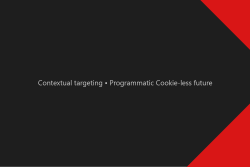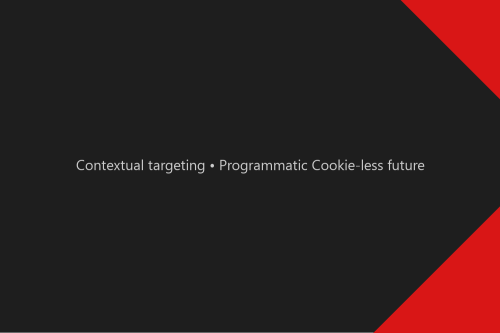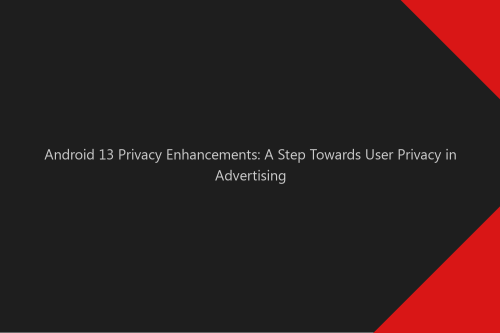Android 13 Privacy Enhancements: A Step Towards User Privacy in Advertising
Android 13 Privacy Features: Safeguarding User Privacy in Advertising Compared to iOS Google’s Android 13 is here, and with it comes many privacy updates to improve user...
Filter by Category
Filter by Author

Android 13 Privacy Features: Safeguarding User Privacy in Advertising Compared to iOS Google’s Android 13 is here, and with it comes many privacy updates to improve user...
Posted by Wojtek Andrzejczak

The United States has seen significant changes in its privacy regulations recently. In 2023, two landmark pieces of legislation, the California Privacy Rights Act (CPRA) and the...
Posted by Wojtek Andrzejczak

In the Cookie-less times, contextual targeting is getting more popular than ever. But are we able to deliver contextual targeting programmatically? What is Contextual targeting?...
Posted by Wojtek Andrzejczak

Since Programmatic Digital-Out-Of-Home (DOOH) is getting more popular, it also brings questions about how we could take an advance it. One of those advantages can be Dynamic...
Posted by Wojtek Andrzejczak

How will the programmatic mobile advertising change after the iOS 14 release? How we’ll be able to run programmatic campaigns? YT#2 – iOS 14 vs. programmatic advertising How...
Posted by Wojtek Andrzejczak
The United States has seen significant changes in its privacy regulations recently. In 2023, two landmark pieces of legislation, the California Privacy Rights Act (CPRA) and the Virginia Consumer Data Protection Act (VCDPA), came into effect. These new laws impact various data collection and usage aspects, particularly for programmatic advertising and retargeting campaigns. This blog will explore these changes and their implications on digital marketing strategies.
Contents
The CPRA builds on the California Consumer Privacy Act (CCPA), strengthening consumer privacy protections and increasing the scope of data protection. It introduces new business requirements, such as data minimization, purpose limitation, and enhanced consumer opt-out rights. The CPRA establishes the California Privacy Protection Agency, a new regulatory body overseeing law enforcement.
It is similar to the CPRA in many ways but has special provisions. The VCDPA grants consumers rights to access, correct, delete, and opt out of the sale or processing of their data for targeted advertising purposes. It also requires businesses to conduct risk assessments for data processing activities that present a risk to consumer privacy.
Implementing the CPRA and VCDPA directly affects programmatic advertising, as it relies heavily on personal data to deliver targeted ads to users. Under the new regulations, businesses must obtain explicit consent from users to collect and process their data for advertising purposes. This may result in reduced data availability for ad targeting, potentially leading to less effective and relevant ads for consumers.
Retargeting campaigns, which involve tracking and targeting users who have previously interacted with a brand, face unique challenges under the new privacy laws. The enhanced opt-out rights granted by the CPRA and VCDPA make it harder for advertisers to continue retargeting users who have chosen to exercise these rights. This could limit the effectiveness of retargeting campaigns and require businesses to explore alternative marketing strategies.
As the US privacy landscape evolves, businesses must adapt their marketing strategies to remain compliant and effective. It’s essential to be transparent about data collection practices and respect user privacy preferences. Companies should invest in first-party data collection and focus on building trust with consumers. Additionally, exploring alternative targeting methods and incorporating contextual advertising can help businesses navigate the new privacy environment.
The CPRA and VCDPA represent a significant shift in the US privacy landscape, impacting programmatic advertising and retargeting capabilities. Businesses must adjust their digital marketing strategies to comply with these new regulations and maintain effective advertising campaigns. By focusing on transparency, trust-building, and alternative targeting methods, companies can adapt to the changing privacy landscape and continue thriving in digital marketing.

In the Cookie-less times, contextual targeting is getting more popular than ever. But are we able to deliver contextual targeting programmatically? What is Contextual targeting?...

Android 13 Privacy Features: Safeguarding User Privacy in Advertising Compared to iOS Google’s Android 13 is here, and with it comes many privacy updates to improve user...